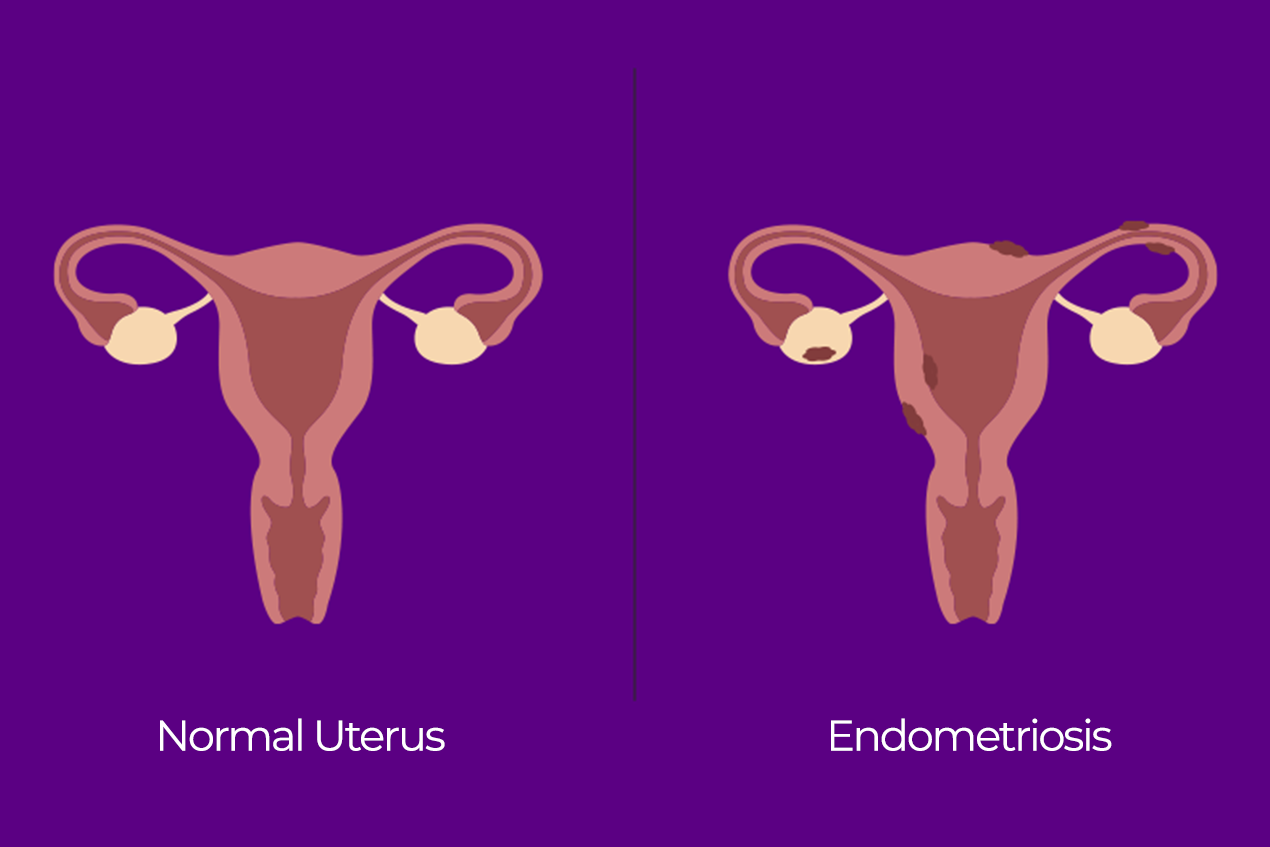- Fikriye Gedikoglu
- 0 Comments
Chocolate cysts are a type of a disease called endometriosis. These cysts, which form when menstrual blood accumulates outside the uterus, especially in the ovaries, can grow over time and cause serious pain. Chocolate cyst, which seriously affects the quality of life of women, usually manifests itself with problems such as menstrual pain and infertility. So, when should you consult a doctor if you think you have a chocolate cyst and what are the treatment methods?
What is a Chocolate Cyst?
A chocolate cyst is a type of endometriosis. Endometriosis is when tissue similar to the lining of the uterus is located outside the uterus, on the ovaries, fallopian tubes and other pelvic organs. These tissues thicken, break down and bleed as they normally do during each menstrual cycle. However, since this blood cannot escape outside the uterus, it accumulates inside the cysts. Over time, these deposits turn into dark brown cysts called “chocolate cysts”.
What are the Symptoms of Chocolate Cyst?
Chocolate cysts do not have the same symptoms in every woman. However, the symptoms that can be seen in general are as follows:
- Painful Menstrual Periods: Severe menstrual cramps are the most common symptom of a chocolate cyst.
- Pelvic Pain Discomfort in the pelvic area outside the menstrual period.
- Pain during sexual intercourse: Pain associated with deep penetration.
- Infertility Endometriosis can cause damage to the tubes or ovaries.
- Irritable Bowel Syndrome (IBS): Bowel problems such as constipation, diarrhea, bloating.
- Persistent Fatigue: A general feeling of weakness and tiredness in the body.
When should women with chocolate cysts consult a doctor?
When you observe the symptoms of a chocolate cyst, it is important to contact an obstetrician-gynecologist. A visit to the doctor is especially necessary in the following cases:
- Painful Periods: If you experience severe pain during your periods, this may be a sign of a chocolate cyst.
- Pain during sexual intercourse: Pain due to deep penetration can be a symptom of a chocolate cyst.
- Infertility Problem: If you are unable to get pregnant despite having unprotected intercourse for a year, you may be affected by a chocolate cyst.
- Pelvic Pain: The possibility of endometriosis can be evaluated, especially if pain persists outside menstrual periods.
- Should I Have Surgery for Chocolate Cyst Disease?
Chocolate cyst treatment is planned individually. The treatment depends on the severity of the disease, the size of the cyst, the woman’s age and her desire to have children. Whether surgery is necessary depends on the following factors:
- Symptoms: If the chocolate cyst causes severe pain and other treatment methods (medication, hormone therapy) are not sufficient, surgery may be necessary.
- Infertility Since chocolate cysts can affect the ovaries in particular, surgery may be recommended in the treatment of infertility.
- Size of the cyst: Large cysts may require surgical intervention. This is important because they can compress organs or damage healthy tissue.
Chocolate Cyst Treatment: Surgery and Other Options
The methods used in the treatment of chocolate cysts are as follows:
Medical Treatment:
Hormone treatments can prevent the growth of a chocolate cyst. These include birth control pills, progestin therapy or GnRH analogs.
Painkillers can relieve pain during menstrual periods.
Surgical Treatment:
If the cysts are large or the quality of life is reduced due to pain, they can be removed by laparoscopic surgery.
Surgery can be performed to remove cysts, protect the ovaries and correct damage to the tubes.
The chance of pregnancy may increase after surgery.
Chocolate cyst (endometriosis) is a manageable disease with early diagnosis and treatment. If you have symptoms, it is very important to see a specialist without wasting time. Assoc. Prof. Dr. Ali Ovayolu is an experienced specialist in the treatment of chocolate cysts and endometriosis and will help you to lead a healthy life by determining the most appropriate treatment method for you.

